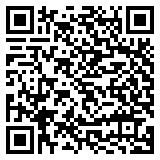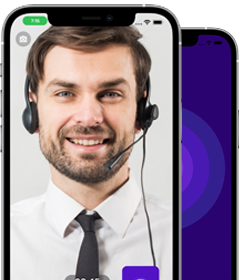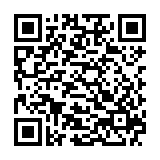Education is an essential human right that knows no boundaries. As the world becomes more interconnected, educational institutions and learning resources are increasingly reaching across borders to serve diverse audiences. Whether it’s an online course, a global university, or an educational app, access to knowledge must be made available to everyone, regardless of language. This is where language services come into play, breaking down communication barriers and ensuring that students worldwide can benefit from quality global education in their native languages.
The Growing Demand for Multilingual Education
With the rise of globalization, the demand for multilingual education has never been higher. The digital revolution has led to the proliferation of online learning platforms and virtual classrooms that cater to students from different linguistic backgrounds. From massive open online courses (MOOCs) like Coursera and edX to virtual tutoring sessions, education providers are opening their doors to a global student body.
However, the language barrier remains a significant challenge. A course designed in English may not be accessible to students who speak Spanish, Mandarin, or Swahili. This is where translation and localisation services are essential to ensure that learning content is made available to as many people as possible, allowing everyone to participate in educational opportunities regardless of their language skills.
How Language Services Help in Global Education
Language services in education cover a wide range of needs, from translating textbooks and course materials to providing real-time interpretation for students in diverse classrooms. Educational institutions and online platforms rely on expert language professionals to make content more accessible and relevant to learners worldwide.
Translation ensures that educational materials are available in different languages, while localization takes it one step further by adapting the content to fit the cultural and educational contexts of the target audience. For example, a science textbook written in English for students in the United States might need to be adjusted for African or Asian students, where different terminologies, examples, and even measurement systems are used.
Real-Time Interpretation and Classroom Access
In a globalized education system, students from various linguistic backgrounds are often required to participate in the same classroom. Whether it’s a university in the UK with international students or an online lecture that includes participants from different countries, real-time interpretation services are becoming increasingly important.
Professional interpreters can bridge the language gap by translating spoken communication in real-time, ensuring that all students are able to understand and engage with the lesson. In some cases, universities or platforms use simultaneous interpretation services during lectures, conferences, and seminars, allowing students to receive translated information in their language as the speaker talks. This type of service is especially critical for higher education institutions with large numbers of international students.
Language in Online Learning Platforms
One of the most significant shifts in education in the 21st century is the transition to online learning. Educational technology companies must ensure that their content is accessible to students worldwide. For this, language services like translation, transcription, and subtitling are essential.
For example, platforms like Duolingo, which teaches languages, rely heavily on linguistic accuracy to ensure that their lessons are clear and culturally appropriate. The use of machine translation and human translators ensures that all instructions and practice exercises are accurate and idiomatic in each language offered.
Moreover, platforms offering video-based lessons or webinars need transcription services to ensure that all content is accessible to people with hearing impairments. By providing subtitles or even translating videos into multiple languages, these platforms expand their reach and inclusivity.
The Importance of Cultural Context
Effective education isn’t just about language but also cultural context. An example of this can be seen in how textbooks or historical content are localized for different regions. A history textbook written for American students may refer to events and figures that are unknown or irrelevant to students in other countries. To ensure that learning materials are culturally appropriate and relatable, localization services step in to adopt examples, metaphors, idioms, and references to fit the cultural context of the target audience.
Even the teaching methods and assessment systems can be adapted to cater to regional educational norms. For instance, in some countries, group projects may be the norm, while in others, individual assignments are more common. Localization ensures that educational materials and methods align with the student’s experiences and expectations.
The Role of Language Services in Building Inclusive Education
One of the core principles of education is inclusivity. Language services play a crucial role in making education inclusive by ensuring that students who speak different languages can learn on an equal footing. Without these services, many students would be excluded from educational opportunities, limiting their ability to succeed in a globalized world.
A great example of this is the way the United Nations has used multilingual services in its educational initiatives. The UN offers a variety of educational resources in multiple languages, from development and sustainability courses to peacebuilding materials. By doing so, they ensure that people from different linguistic backgrounds can access the same knowledge, contributing to the achievement of global goals like quality education for all.
Challenges in the Language of Education
While language services are crucial, there are challenges. The demand for localization and translation in education is growing rapidly, and ensuring that the right resources are available in every language can be a logistical and financial challenge for institutions. Moreover, the rapid evolution of technology and online learning platforms requires language services to stay up-to-date with new educational tools, terminology, and methods.
The pressure to maintain accuracy, cultural relevance, and timeliness in the translation of educational materials also means that institutions must work closely with language service providers who specialize in this field. These providers are not only skilled in translation but are also experts in adapting materials for different educational systems and cultural contexts.
Final Thoughts
The role of language services in global education is undeniable. By ensuring that students have access to quality, culturally appropriate learning materials in their native languages, educational institutions can level the playing field and create a more inclusive world. As online learning continues to expand and educational institutions become increasingly global, the importance of professional translation, localization, and interpretation services will only continue to grow.
Whether you’re a student eager to learn, an educator wanting to expand your reach, or an institution looking to make your content accessible to a global audience, language services are key to breaking down barriers and making education truly universal.





0 Comments